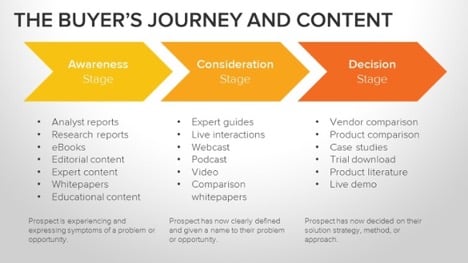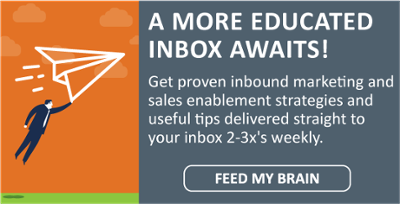5 Tips to Activate Your Blog Content and Boost Your Conversions
You have a blog. Great. Are you analyzing it? Are you tracking its performance? Do you know if your efforts are paying off? Time is money, and if...


For your content to resonate with your audience and get a response, they have to be able to identify with it. They have to feel that it applies to them. If your content is generic or sounds like it’s written to someone else, your prospects will keep clicking through the Internet.
How can you come up with content that not only matches who your target prospect is, but also where he or she is in the buyer’s journey? That’s what we’re going to dig into in this post.
Buyer personas are fictional, generalized representations of your ideal clients. They describe demographics such as age and gender, as well as psychographics such as goals, fears, and how they perceive the problem you solve.
Personas help you understand your prospects better, and make it easier for you to tailor content to the specific needs, behaviors, and concerns of different groups. You may have one or two personas, or several, depending on how many market segments you’re targeting.
Because people move from one stage of the buying process to another, learning and gaining knowledge as they go, seeking different information as they go along, your content has to be relevant at each stage of the buyer’s journey.
 This isn’t to say that every piece of content has to serve every stage. Not at all — you want to develop a variety of different content pieces that will address your different personas at each stage in the buyer’s journey: The Awareness Stage, when they are beginning to realize they have a problem, The Consideration Stage, when they are researching solutions to that problem, and the Decision Stage, when they are looking at a set of providers to determine who they should hire or purchase from.
This isn’t to say that every piece of content has to serve every stage. Not at all — you want to develop a variety of different content pieces that will address your different personas at each stage in the buyer’s journey: The Awareness Stage, when they are beginning to realize they have a problem, The Consideration Stage, when they are researching solutions to that problem, and the Decision Stage, when they are looking at a set of providers to determine who they should hire or purchase from.
You’ll have blog posts on top-of-the-funnel topics, middle-of-the-funnel topics, and bottom-of-the-funnel topics. You’ll have eBooks on subjects that those just starting to research their problem will find helpful, and you’ll have eBooks on subjects for those who know more and are now researching solutions to those problems. You’ll host webinars on broad topics as well as laser-focused topics, etc.
To do this in an organized fashion and make sure you’re covering all the subjects and topics you need to, you’ll want to use content mapping.
To create a content map, you can use something as simple as Excel. Within your Excel workbook, create a sheet for each buyer persona. Then, headline 3 columns with the three stages of the buyer’s journey. You can then use the rows under each column to list the existing content you have for each persona at each stage, and see where the gaps are where you don’t have content. You can then brainstorm new content ideas based on what you need.
Over time, you’ll develop a full set of content assets that cover each persona at each stage, giving you the maximum opportunity to connect with your prospects effectively.


You have a blog. Great. Are you analyzing it? Are you tracking its performance? Do you know if your efforts are paying off? Time is money, and if...

Creating blog content, developing premium content, content distribution, email marketing, social media marketing—there's a continuous list of what it...

Attempting to tackle your entire content marketing to-do list in one day could be overwhelming. Actually, it would be VERY overwhelming. But if you...